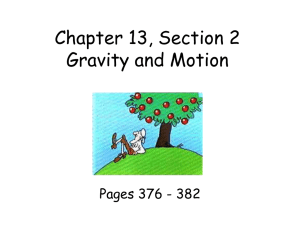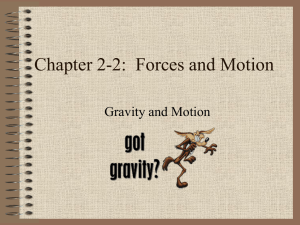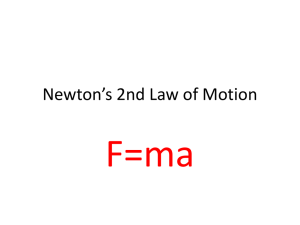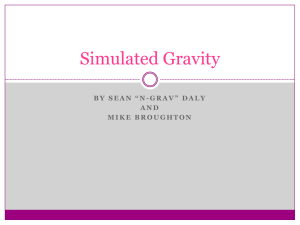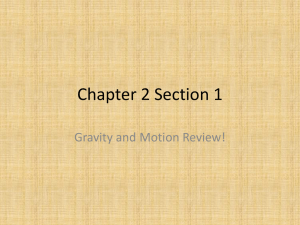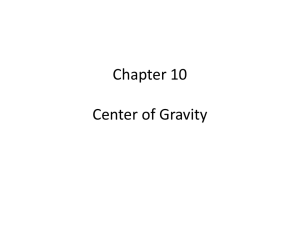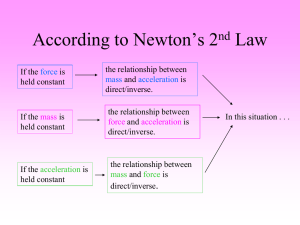Gravity Notes - Spring Lake Park Schools
advertisement
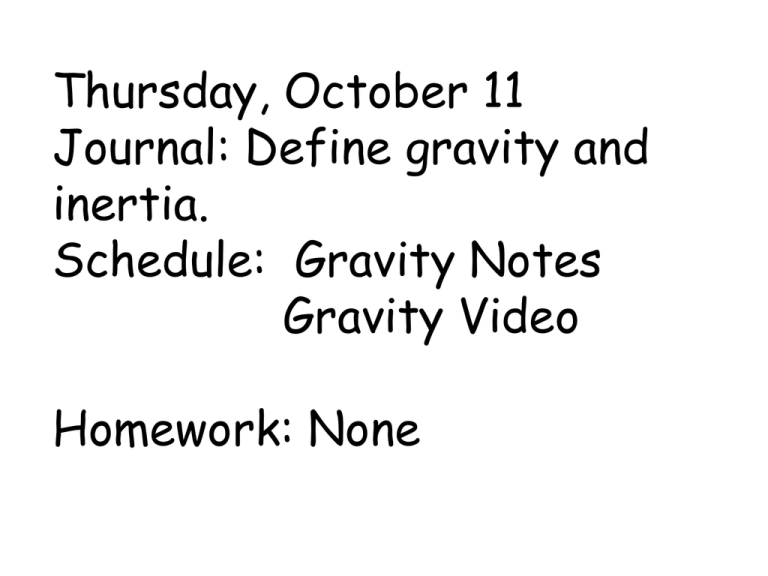
Thursday, October 11 Journal: Define gravity and inertia. Schedule: Gravity Notes Gravity Video Homework: None Gravity Gravity is a force that acts between any 2 masses. Two factors affect the gravitational attraction between objects: mass and distance. Universal Gravitation • Newton realized that gravity acts everywhere in the universe, not just on Earth. • It is the force that makes an apple fall to the ground. • It is the force that keeps the moon orbiting around Earth. • It is the force that keeps all the planets in our solar system orbiting around the sun. Law of Universal Gravitation • What Newton realized is now called the law of universal gravitation. • The law of universal gravitation states that the force of gravity acts between all objects in the universe. • This means that any two objects in the universe, without exception, attract each other. • You are attracted not only to Earth but also to all the other objects around you. What direction is Gravity? Earth’s gravity acts downward toward the center of the Earth. A cool thing about gravity is that it acts through objects. What is Free fall? Have you ever experienced free fall? Free Fall • When the only force acting on an object is gravity, the object is said to be in free fall. • An object in free fall is accelerating. • Do you know why? • In free fall, the force of gravity is an unbalanced force, which causes an object to accelerate. Free Fall • Near the surface of Earth, this acceleration due to gravity is 9.8 m/s2. • For example, suppose an object is dropped from the top of a building at a starting velocity of 0 m/s. • After one second, its velocity has increased to 9.8 m/s. • After two seconds, its velocity is 19.6 m/s (9.8 m/s + 9.8 m/s) • The velocity continues to increase as the object falls. •While it may seem hard to believe at first, all objects in free fall accelerate at the same rate regardless of their masses. •The two falling objects in the figure on the right demonstrate this principle. Do you believe that all objects fall with the same acceleration? Why or why not? Air Resistance • Despite the fact that all objects are supposed to fall at the same rate, you know that this is not always the case. • For example, an oak leaf flutters slowly to the ground, while an acorn drops straight down. • Objects falling through air experience a type of fluid friction called air resistance. Air Resistance Gravity causes objects to accelerate downward, whereas air resistance acts in the opposite direction and reduces acceleration. Falling objects with a greater surface area experience more air resistance. •In a vacuum, where there is no air, all objects fall with exactly the same rate of acceleration. •Air resistance increases with velocity. •As a falling object speeds up, the force of air resistance becomes greater and greater. Terminal Velocity • Eventually, a falling object will fall fast enough that the upward force of air resistance becomes equal to the downward force of gravity acting on the object. • The object continues to fall, but its velocity remains constant. • Terminal velocity is reached when the force of air resistance equals the weight of the object. Gravity’s Influence on Orbits Video http://www.neok12.com/php/watch.php?v=zX617261655c700f78 777367&t=Gravitation

